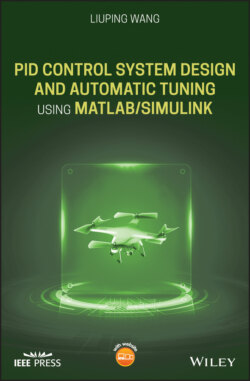Читать книгу PID Control System Design and Automatic Tuning using MATLAB/Simulink - Liuping Wang - Страница 27
1.3.1 Ziegler–Nichols Oscillation Based Tuning Rules
ОглавлениеZiegler–Nichols oscillation based tuning rules are to use closed-loop controlled testing to obtain the critical information needed for determining the PID controller parameters.
In the closed-loop control testing, the controller is set to proportional mode without integrator and derivative action. The sign of must be the same as the steady-state gain of the plant for the reason of introducing negative feedback in the control system. With the proportional closed-loop control, the feedback gain is set to be a very small value in magnitude to begin the experiment. The value of is gradually increased until the control signal exhibits sustained oscillation (see Figure 1.12). There are two parameters obtained from this test: the value of that has caused the oscillation and the period of the oscillation. We denote this particular as and the period as . With these two parameters, the PID controller parameters are presented for the Ziegler–Nichols tuning rules in Table 1.1.
Figure 1.12 Sustained closed-loop oscillation (control signal).
Table 1.1 Ziegler–Nichols tuning rule using oscillation testing data.
| P | ||||||
| PI | ||||||
| PID |
A proportional control will not cause sustained oscillation for first order plant and second order plant with a stable zero. Thus, the tuning rule is not applicable to these two classes of stable plants. The following example is used to illustrate an application of the tuning rule.
